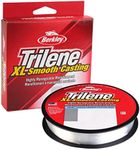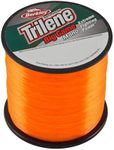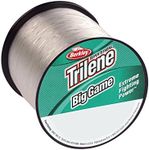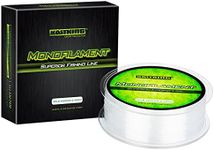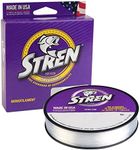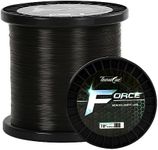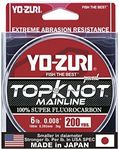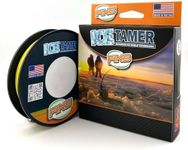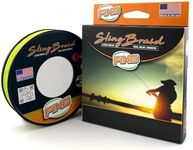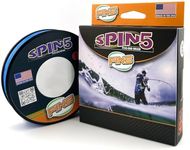Buying Guide for the Best Monofilament Fishing Lines
Choosing the right monofilament fishing line can greatly enhance your fishing experience. Monofilament lines are popular due to their versatility, ease of use, and affordability. When selecting a monofilament fishing line, it's important to consider several key specifications to ensure you pick the best fit for your fishing needs. Understanding these specs will help you make an informed decision and improve your chances of a successful catch.Pound Test (Line Strength)The pound test refers to the amount of weight the fishing line can hold before breaking. This is crucial because it determines the size and type of fish you can catch. Light lines (2-6 lb test) are suitable for small fish like trout and panfish, medium lines (8-12 lb test) are good for bass and walleye, and heavy lines (15+ lb test) are ideal for larger fish like pike and catfish. Choose a line strength based on the fish species you are targeting and the fishing conditions.
Line DiameterLine diameter is the thickness of the fishing line. Thinner lines are less visible to fish and allow for longer casts, but they may not be as strong. Thicker lines are more durable and can handle rough conditions better. If you are fishing in clear water or targeting skittish fish, a thinner line may be preferable. For heavy cover or abrasive environments, a thicker line is more suitable.
Line StretchMonofilament lines have a certain amount of stretch, which can be beneficial or detrimental depending on your fishing style. Stretch can absorb shocks and prevent the line from breaking under sudden force, making it good for fighting fish. However, too much stretch can reduce sensitivity and make it harder to detect bites. If you need more sensitivity, look for lines with lower stretch. If you are targeting aggressive fish that put up a fight, a line with more stretch might be better.
Abrasion ResistanceAbrasion resistance refers to the line's ability to withstand wear and tear from rocks, logs, and other underwater obstacles. High abrasion resistance is important if you are fishing in areas with a lot of cover or structure. If you fish in open water with fewer obstacles, abrasion resistance may be less critical. Consider the environment where you will be fishing and choose a line that can handle the conditions.
VisibilityThe visibility of the fishing line can affect your success rate, especially in clear water. Monofilament lines come in various colors, such as clear, green, blue, and fluorescent. Clear lines are less visible to fish and are good for clear water. Colored lines can be easier for you to see above water, which helps with line management. Choose a color based on the water clarity and your personal preference for visibility.
Knot StrengthKnot strength is the ability of the line to hold a knot without breaking. This is important because a weak knot can lead to lost fish. Monofilament lines generally have good knot strength, but it's still important to tie your knots carefully and test them. If you are using complex knots or targeting large fish, look for lines with high knot strength to ensure your knots hold under pressure.
